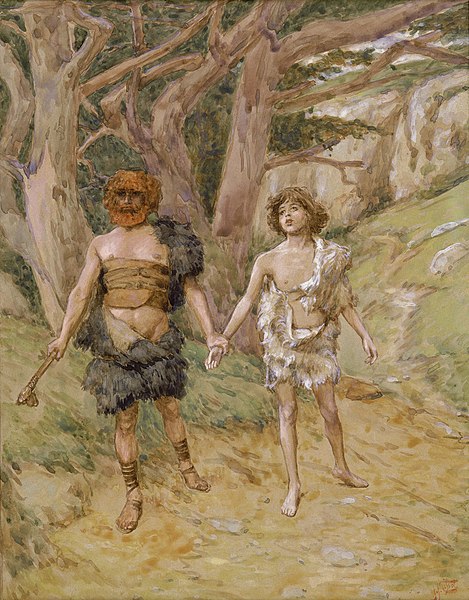Hebrews 11 is the eleventh chapter of the Epistle to the Hebrews in the New Testament of the Christian Bible. The author is anonymous, although the internal reference to "our brother Timothy" causes a traditional attribution to Paul, but this attribution has been disputed since the second century and there is no decisive evidence for the authorship. This chapter contains the exposition about the examples of faith's effective expression.
Epistle to the Hebrews 2:14–5:5; 10:8–22; 10:29–11:13; 11:28–12:17 in Papyrus 13 (AD. 225–250).
In the biblical Book of Genesis, Cain and Abel are the first two sons of Adam and Eve. Cain, the firstborn, was a farmer, and his brother Abel was a shepherd. The brothers made sacrifices, each from his own fields, to God. God regarded Abel's offering, but not Cain's. Cain killed Abel and God cursed Cain, sentencing him to a life of transience. Cain then dwelt in the land of Nod, where he built a city and fathered the line of descendants beginning with Enoch.
Cain slaying Abel, by Peter Paul Rubens, c. 1600
Cain leadeth Abel to death, by James Tissot, c. 1900
A depiction of Cain burying Abel from an illuminated manuscript version of Stories of the Prophets
Cain and Abel. Plaster cast after bronze (1425–1438) by Jacopo Della Quercia (1374–1438), Bologna, Italy. National Museum of Scotland, Edinburgh





